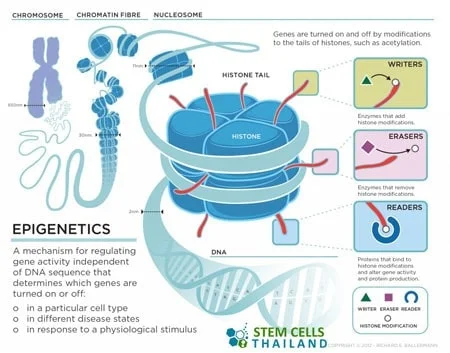
Epigenetics relates to the process wherein regulatory proteins have the ability to switch genes on and off in such a way that it may be passed on at some point in the process of cellular division.
Epigenetics refers to modifications in gene expression that don’t involve changes to the underlying DNA sequence. While the genetic code (DNA sequence) remains unchanged, epigenetic changes can switch genes on or off. Epigenetic therapy, therefore, is an approach to treat diseases by modifying the epigenetic markers on DNA and histone proteins, with the primary goal being to reactivate silenced genes or suppress overactive ones.
Epigenetic therapy primarily targets the enzymes that add or remove these epigenetic marks, thereby influencing gene expression. Some of the main approaches include:
With the ongoing discovery of new epigenetic markers and the development of more refined tools to modify them, epigenetic therapy holds promise as a powerful approach to treating a variety of diseases. As our understanding of the epigenome deepens, The Regeneration Center expects more targeted and effective treatments to emerge.
Zombie cells, also called senescent cells, are non-dividing cells that accumulate in the body due to stress or damage, resisting… Read More
Chimeric antigen receptor-T cell treatment (CAR-T cell therapy) holds immense potential to revolutionize organ transplantation, particularly for patients who struggle… Read More
In the ever-evolving landscape of nutrition science, the discourse around dietary fats has undergone significant transformation. The Regeneration Center is… Read More
New research shows that specific types of brain cells become active after brain injuries and exhibit properties similar to those… Read More
Chemokines, critical components in the immune system, are small proteins that facilitate the migration and positioning of immune cells throughout… Read More
Stem cell research examines everything from gene expression to differentiation capacities to therapeutic potentials. With such diverse data types and… Read More